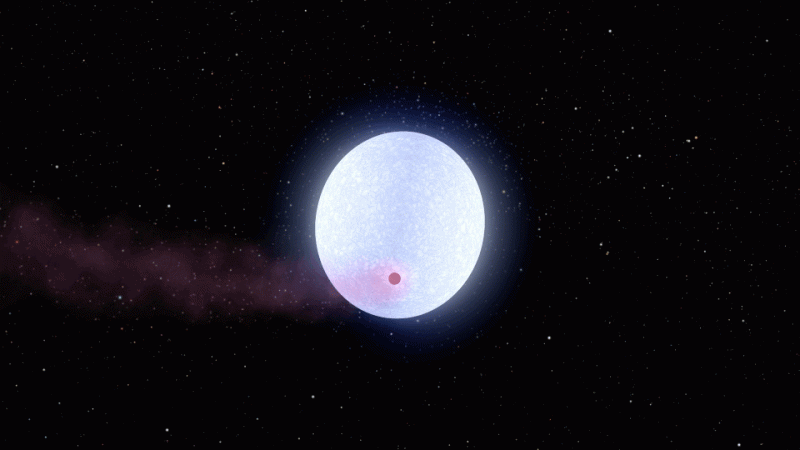Astronomer Leads Team Discovery of Hottest Known Planet

Astronomer Scott Gaudi, Thomas Jefferson Professor for Discovery and Space Exploration, co-led an international team that has discovered the hottest planet known. The team has been tracking the distinctly odd planet since mid-2014. The planet, KELT-9b, is “so hot it stretches the definition of the word ‘planet,’” Gaudi says. The star that the planet orbits is called KELT-9. It is found about 650 light years away from Earth in the Cygnus constellation.
"KELT-9b is one of the strangest exoplanets I've ever seen," said Gaudi, who has been searching for exoplanets for the past two decades. “It’s a planet by any of the typical definitions based on mass, but its atmosphere is almost certainly unlike any other planet we’ve ever seen just because its day-side temperature, more than 7,800 degrees, is hotter than most stars, and only 2,000 degrees or so cooler than our sun.”
@OSUAstro's Scott Gaudi co-led an international team that has discovered the hottest planet on record #ASCDaily
A noted exoplanet hunter, Gaudi’s focus is sometimes presumed to be on searching for those that might be Earth-like and therefore habitable. But, Gaudi says, “I've never been exclusively focused on looking for habitable planets. I've always been interested in all the planets that are out there, especially the oddballs.
“There’s good reason to study worlds that are unlivable in the extreme. Whenever we find systems like KELT-9, systems that stretch the boundaries of what we consider 'extreme,' typically we always learn something new about planets, the relationship to their host stars, and the atmospheres of giant planets.

“I'm particularly interested in figuring out how common these systems are and in measuring the evaporation rate of the planet. So, yes, we already have another similar candidate that we are writing up now!”
Ohio State astronomy department study co-authors include Gaudi’s postdoc Marshall C. Johnson and graduate students Daniel J. Stevens and Matthew Penney, along with Professors Andrew Gould and Richard Pogge in the Department of Astronomy. Their work is published in Nature.
This story has generated extensive media coverage, including the Columbus Dispatch, The Guardian, Washington Post, Daily Mail, NPR, International Business Times, NOVA, Wall Street Journal and Discover Magazine.
The study was funded, primarily, by the National Science Foundation via an NSF CAREER Grant, an NSF PAARE Grant and an NSF Graduate Research Fellowship. Additional funding support came from NASA via the Jet Propulsion Laboratory and the Exoplanet Exploration Program; the Harvard Future Faculty Leaders Postdoctoral Fellowship; the Theodore Dunham, Jr., Grant from the Fund for Astronomical Research; and the Japan Society for the Promotion of Science.
American partner institutions include Vanderbilt University, Fisk University, Pennsylvania State University, the Harvard-Smithsonian Center for Astrophysics, Las Cumbres Observatory Global Telescope Network, University of Notre Dame, Lehigh University, NASA Ames Research Center, Bay Area Environmental Research Institute, Swarthmore College, IPAC, Brigham Young University, University of California-Santa Cruz, University of Wyoming, Louisiana State University, University of Louisville, Spot Observatory in Nashville, Westminster College, Kutztown University, University of Hawaii, University of Washington, Texas A&M University, Wellesley College, and Winer Observatory in Sonoita, AZ.
International team members represent Denmark, Italy, Japan, Portugal, Switzerland, Australia, Germany and South Africa.
For more information, read the press release from University Communications, courtesy of Pam Frost Gorder.
